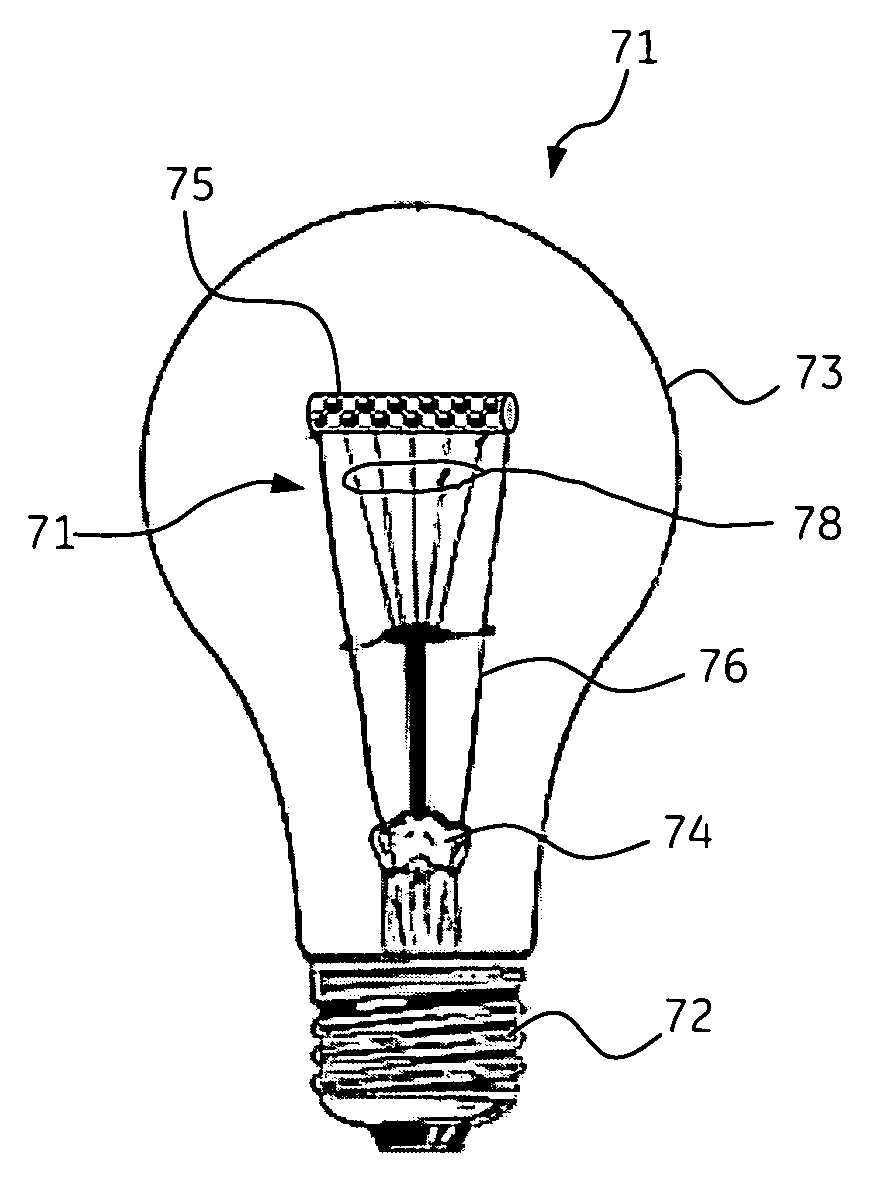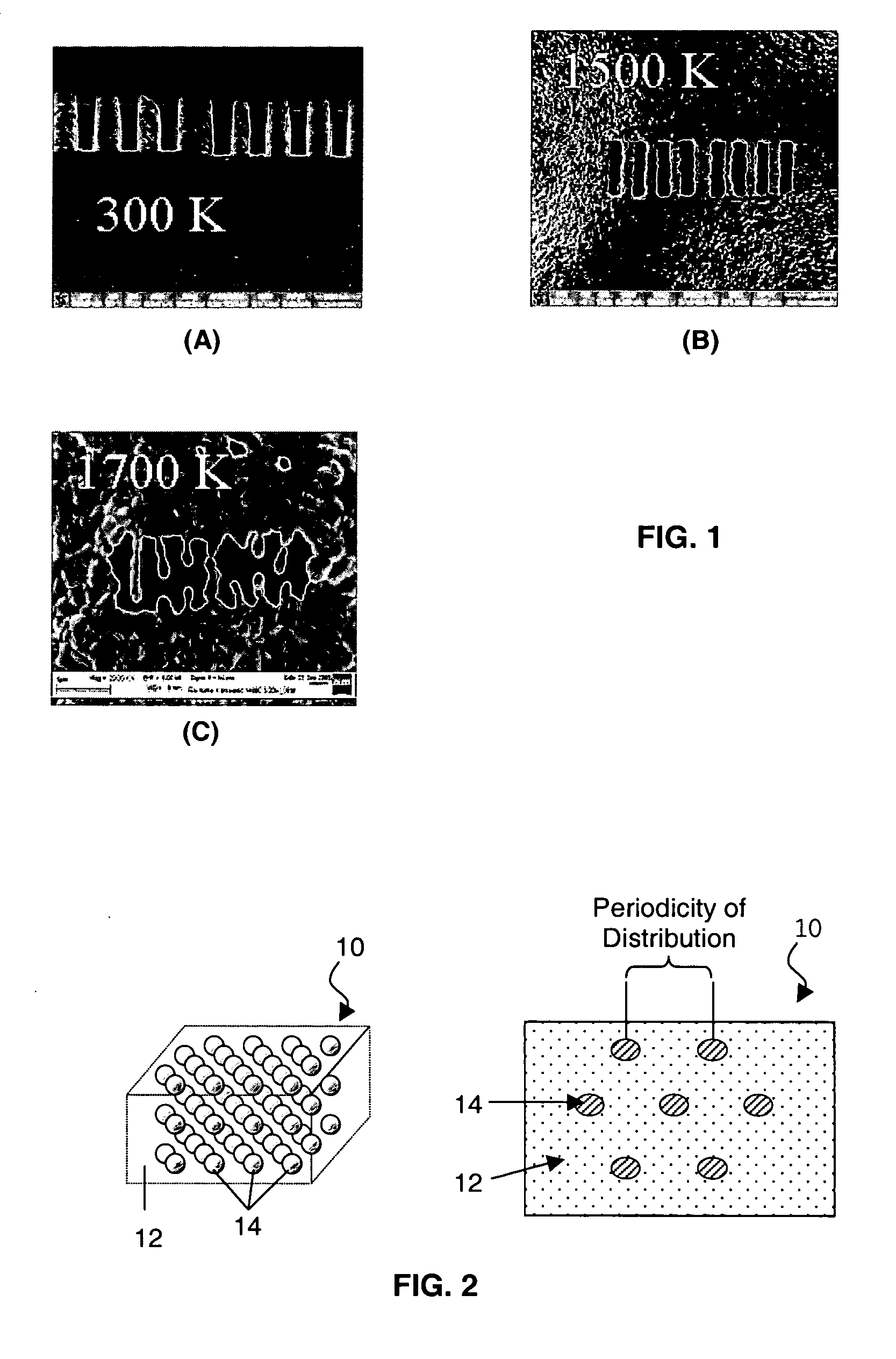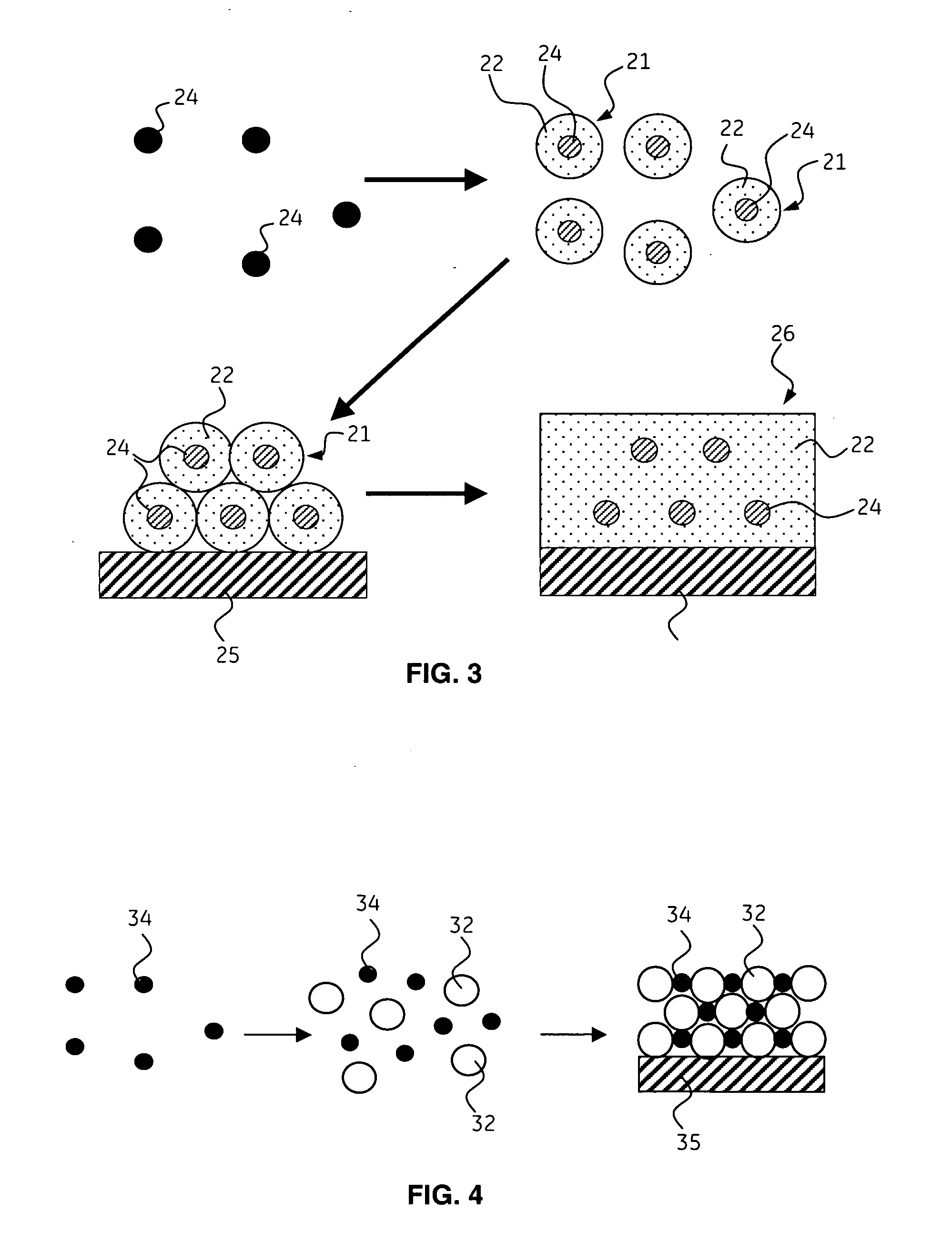Article incorporating a high temperature ceramic composite for selective emission
a ceramic composite and high temperature technology, applied in the field of ceramic composites, can solve the problems of low energy efficiency of incandescent lamps, loss of market share of compact fluorescent lamps, color, dimmability, acquisition cost,
- Summary
- Abstract
- Description
- Claims
- Application Information
AI Technical Summary
Benefits of technology
Problems solved by technology
Method used
Image
Examples
example 1
[0075] In one example, an incandescent lamp is made. The incandescent lamp includes a base, a heating element coated with a high temperature emissive ceramic composite and a light transmissive envelope attached to the base around the heating element. Before the heating element is mounted to the base, the ceramic composite is formed on the heating element. To form the ceramic composite, silica nanoparticles having a particle size of about 400 nm are assembled through electrophoresis or evaporation onto the heating element. Chemical vapor deposition (CVD) of silica is then used to bridge the silica nanoparticles to form an interconnected structure. A further CVD process is performed to infiltrate the silica matrix and form a 50 nm HfN ceramic shell around the silica nanoparticles. The silica particles are etched out with hydrofluoric acid. Because the HfN has a plasma frequency ωp such that ωp is greater than 8 eV indicating strong metallic behavior and the dielectric constant of the ...
example 2
[0076] In a second example, another incandescent lamp is made. The incandescent lamp includes a base, a tungsten filament coated with a high temperature emissive ceramic composite and a light transmissive envelope attached to the base around the tungsten filament. Before the tungsten filament is mounted to the base, the ceramic composite is formed on the filament. Composite nanoparticles consisting of a 150 nm tungsten core and a 100 nm coating of HfO2 are assembled on the filament using electrophoresis. The assembled particles are then sintered to form a monolithic coating on the tungsten filament. The coated filament is then mounted within the incandescent lamp and the envelope is attached and a fill gas comprising Ar and 10 ppm O2. Current is passed through the base to the ceramic coated filament causing the ceramic coating to selectively reflect photons having a wavelength greater than about 700 nm and to emit photons having a wavelength between about 400 nm and about 700 nm at ...
PUM
| Property | Measurement | Unit |
|---|---|---|
| wavelength | aaaaa | aaaaa |
| wavelength | aaaaa | aaaaa |
| temperatures | aaaaa | aaaaa |
Abstract
Description
Claims
Application Information
 Login to View More
Login to View More - R&D
- Intellectual Property
- Life Sciences
- Materials
- Tech Scout
- Unparalleled Data Quality
- Higher Quality Content
- 60% Fewer Hallucinations
Browse by: Latest US Patents, China's latest patents, Technical Efficacy Thesaurus, Application Domain, Technology Topic, Popular Technical Reports.
© 2025 PatSnap. All rights reserved.Legal|Privacy policy|Modern Slavery Act Transparency Statement|Sitemap|About US| Contact US: help@patsnap.com



